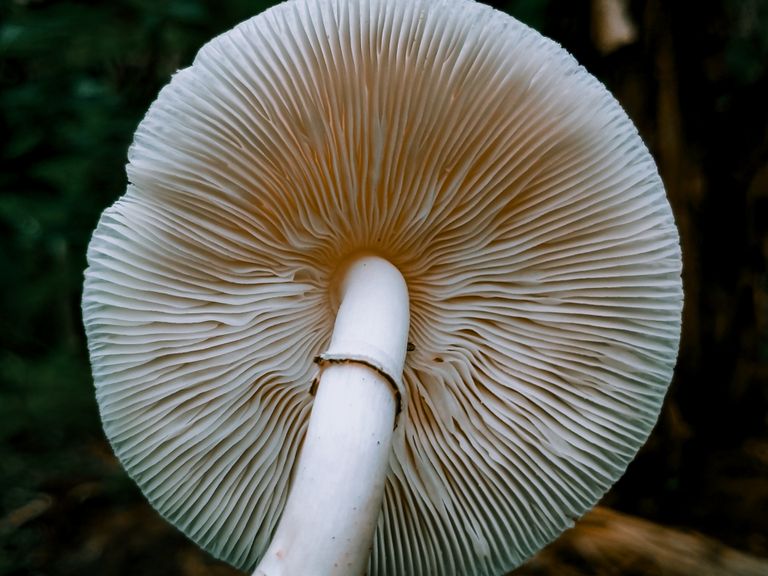
Hello world
Today I feel very lucky because I found something very interesting growing in my chicken coop, among the chicken litter and manure a mushroom with a unique shape grows, after I traced it it turned out that this was the Leucocoprinus cepistipes mushroom which is one of the species of mushrooms that is often found. found growing in damp locations and rich in organic material, such as chicken manure or other organic material that has rotted, as you can see in the picture, this mushroom is characterized by its white cap and thick stem but with a smooth texture, this mushroom said too grows quickly and has a relatively medium size.
the presence of this fungus in my traditional chicken coop is not a problem at all, and it is a beautiful sight when looking at them up close, but the presence of Leucocoprinus cepistipes is an indication and valuable information for me, this proves that the conditions around my coop are currently experiencing quite high humidity and a lot of organic material (chicken droppings) decomposing, the presence of the Leucocoprinus cepistipes fungus also shows that there is a natural cycle of decomposition processes in my cage.

Leucocoprinus cepistipes mushroom cap with brown spots

Leucocoprinus cepistipes mushroom cap with brown spots

Leucocoprinus cepistipes mushroom cap with brown spots

the bottom of the mushroom cap with gills is bright white and has a soft texture.

what is the fungus Leucocoprinus cepistipes?
Leucocoprinus cepistipes is a species of fungus that has attracted a lot of attention from researchers and mushroom lovers because of its uniqueness. Leucocoprinus cepistipes belongs to the Agaricaceae family and is found in various places, especially in tropical and subtropical areas. Leucocoprinus cepistipes often grows in organic substrates such as piles. animal waste and rotting wood, even though they look like harmless fungi, it is important to remember that some aspects of Leucocoprinus cepistipes is worth paying attention to, both in an ecological context and in consumption.
The main characteristic of the Leucocoprinus cepistipes fungus is its shape which resembles an umbrella with a white to cream colored cap, which often contains a thin fibrous layer, at the bottom of the cap there are white lamellae and will turn brown when the mushroom has withered, while the stem is slender and has a ring on it. in the middle of the stem, the mushroom stem often looks slender and elastic, giving the impression of lightness when held.


The uniqueness of this fungus is that its growth process is very dependent on organic material and high humidity, Leucocoprinus cepistipes plays an important role in the decomposition process in nature, this fungus helps break down the remains of organic material and returns them to the soil as nutrients, this fungus will never be come across in the culinary world because several studies have shown that this mushroom contains chemical compounds that are dangerous to health.
Leucocoprinus cepistipes also has important value in ecological research because of its relationship with other microorganisms in the soil, the fungus Leucocoprinus cepistipes together with other types of fungi helps maintain ecosystem balance by recycling nutrients and enriching the soil, as a result of its interaction with the surrounding environment Leucocoprinus cepistipes also plays a role in sustainability an ecosystem rich in biodiversity.